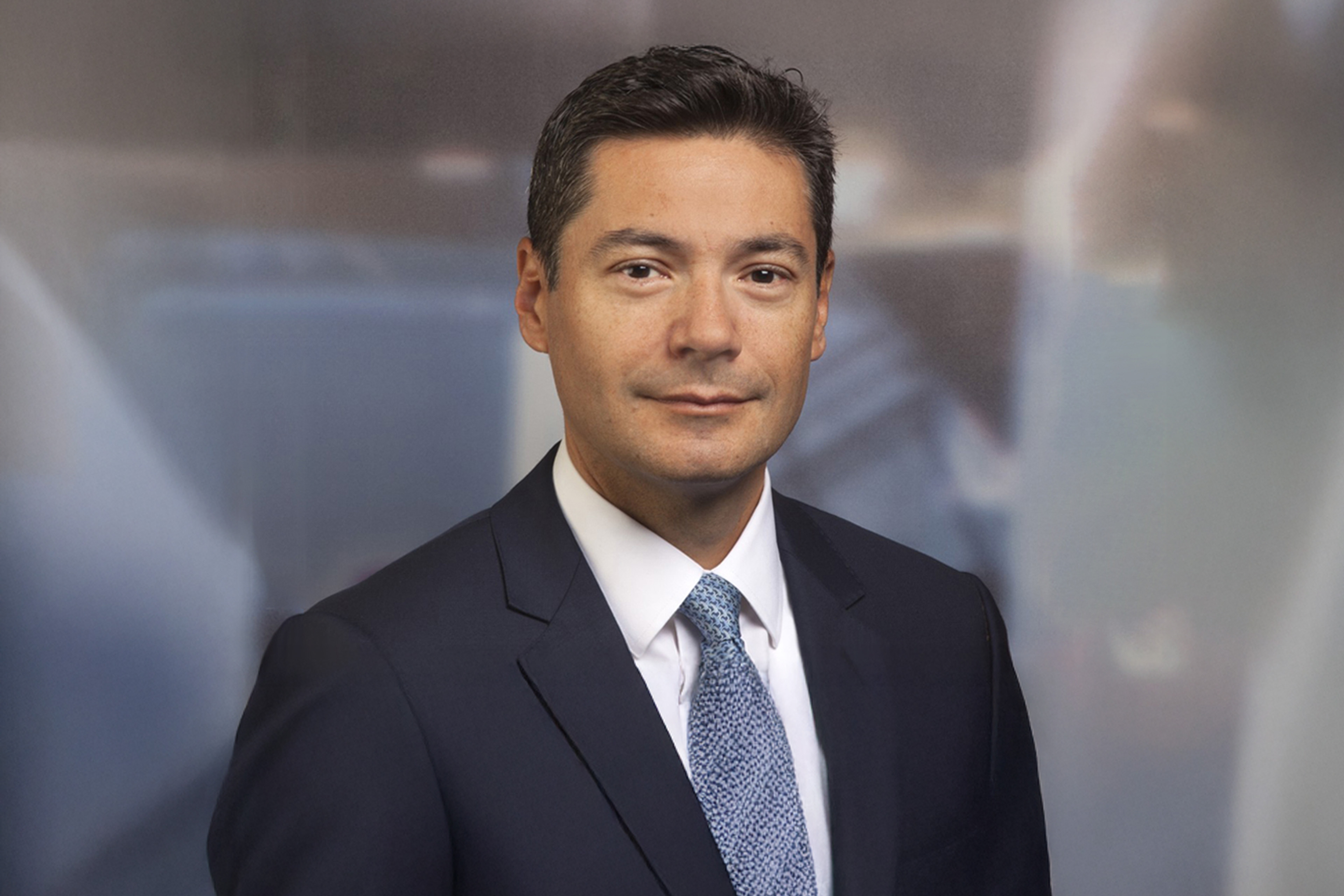EY refers to the global organization, and may refer to one or more, of the member firms of Ernst & Young Global Limited, each of which is a separate legal entity. Ernst & Young Global Limited, a UK company limited by guarantee, does not provide services to clients.

In a roundtable, these leaders remain focused on growth as new economic concerns emerge and old ones from the pandemic begin to recede.
In brief
- CFOs said their organizations were not moving money from banks, but they are exploring indirect counterparty risks as worries spread globally.
- Attendees are attuned to interest rate risks in the continuing fight against inflation, noting that price increases are slowing — but labor challenges remain.
As banking sector volatility roiled the markets globally, complicating the Federal Reserve’s fight against inflation, CFOs have no shortage of risks to monitor, while economic outlooks remain difficult to pin down. While the impacts to multinationals vary greatly depending on sectors, geographies and customer resiliency, these executives continue to focus on driving growth — cautiously.
With organizations representing about a trillion dollars in revenue cumulatively, these Fortune 250 CFOs gathered in mid-March for another EY CFO Roundtable to talk through the most important issues, including inflation, China and tax policy. Almost half of the CFOs said that they were staying the course without deviations in hiring or investing, while 38% were making targeted cutbacks and 15% were slowing down investments. No one said they were ramping up or pursuing a broad retrenching. And in a multiple-choice poll, 87% said that driving growth remained one of their top two priorities, with 40% also citing cost reductions.
This roundtable was hosted by Carmine Di Sibio, EY Global Chairman and CEO; Julie Boland, EY US Chair and Managing Partner and EY Americas Managing Partner; and Juan Uro, Americas Leader for the EY Center for Executive Leadership. Gregory Daco, EY-Parthenon Chief Economist, contributed additional insights.
“I don’t think our clients are worried about the banking system overall today, but smaller clients are looking more intently about where and how they’ve been housing their cash,” Di Sibio said. “Before that, the conversations were around the economy and where interest rates are going. Generally speaking, investments are continuing, certainly investment in digital, and we’ve been getting more questions on how to incorporate artificial intelligence.”
Here is the pulse from leading CFOs today on the top C-suite priorities.
Current banking environment: digging deep for implications
On the day of the discussion, the top headlines concerned all banks, not just in the US but globally. No participants said that they had moved money out of their banks, but CFOs were scrutinizing indirect counterparty risks, including in:
- Pension fund investments
- Some private equity and private markets that used troubled banks
- Derivative portfolios with hedging programs
- Letters of credit provided by customers
- ETF arrangements
Some leaders expressed concern about the long-term implications of the Biden administration’s response, which could encourage more risky behavior. Daco resisted comparisons to the 2007–08 global financial crisis because today’s risk stems from interest rates, not credit quality, while regulation is more present and the Fed responded more rapidly.
“But there will be pressures on the rest of the world,” the economist added. “I would note that it’s not just the banking sector seeing cracks — it’s pension funds, mutual funds and perhaps commercial real estate. There are going to be more cracks that will have big implications.”
Daco believes that the Fed is likely to pursue a dual-track strategy in the short term, in which monetary policy will be kept tight while broader policy is adapted to the current banking environment.
Inflation: a slightly moderating impact, aside from labor
Prices are rising but not at the levels of 2022, according to 67% of participating CFOs, with the rest divided among feeling that prices are up more rapidly, about the same or falling. The overall feeling mirrors what Daco is seeing in the market: we’re past peak inflation but not past peak pricing levels.
Again, different sectors are seeing different impact, as energy prices have fallen and food prices are trending downward, but resilient demand on the services side is leading to upward pressure, particularly in labor. Labor is one factor keeping supply chain cost pressures elevated even as ocean freight, for example, has retreated from its pandemic highs. One CFO in retail said, “The higher cost of labor is impacting prices and will likely continue through 2023.”
Participants generally felt that a return to normal is within sight, except in labor, and that the window is closing for shifting more price increases onto consumers. Geographic variables exist as well: there are continued concerns about Europe and whether it will rectify energy concerns by next winter. “I would say we haven’t hit the peak of inflation in Europe in our industry,” a CFO of a global retail company indicated.
“There are more jobs than people across most markets and we don’t see that abating until there are more economic head winds,” one attendee said. Another agreed: “I’ve written off the labor part in labor, but I look to commodities for relief.” In terms of pricing, one CFO added: “Certainly you can see the consumer is under more pressure. We expect to get back to the historical norm.”
Amid increasing pressure from labor cost, CFOs are prioritizing digital investments, automation and offshoring. “We’ve added self-checkout in stores,” an attendee said. “On the corporate side, we’ve moved low-touch jobs to the Philippines.” But digital investments continue to be front and center in CFOs’ agendas and more than a third of the CFOs indicated digital to be the area less likely to be cut.
China: pursuing scenario planning and creating contingencies
Participating CFOs generally felt that China is too big not to be present in their plans, although many say that the country’s importance to them has been gradually declining, not just because of geopolitical concerns but also demographic trends. Its aging population creates varying sector implications — for example, a positive trend for health care businesses but less so for certain types of clothing and footwear.
Daco added that, while growth in China was accelerating again, the strategic calculus for multinationals has grown more complex. “I think we’re in the midst of an acceleration, away from ‘zero COVID,’ with some preliminary data that is quite good,” he said. “But structurally, I’m more concerned. There is a lack of impetus over the next three to five years over topics like the aging population and debt concerns. It’s no longer about a pure growth play from the authorities but about the quality of growth.”
Attendees also said they are cautious about what they bring into China, as the government prioritizes local industry and intellectual property can get copied easily. “We do some of our device manufacturing there, then suddenly very similar versions of the product are available,” one CFO shared. Some CFOs indicated that they are keeping manufacturing in China primarily oriented for products to be sold in China. “Investments we’ve been making over the last couple of years are for an ‘of China, in China’ type of business” one CFO said.
In this complex environment, strategic considerations include:
- Scenario planning is a must to be attuned to all the direct and indirect dependencies, leveraging lessons learned after decoupling from Russia last year.
- As CFOs dig deeper into their supply chains, they often find lower-tier suppliers whose components cannot easily be replaced without time and careful consideration.
- Many are diversifying to regional supply chains, replacing China with Southeast Asian countries such as Vietnam and Malaysia, while also leveraging India and countries in Latin America.
Taxes: minimum taxes a top area of focus
More than 60% of participating CFOs indicated that the global minimum tax and stock buyback tax are top of their agendas. While the excise tax on certain stock repurchases is a consideration, CFOs are not adjusting their share buyback programs yet. “We haven’t slowed down on our path,” one leader in health care indicated, referring to their share buyback program. CFOs are also focused on Tax Cuts and Jobs Act provisions, as Congress did not resolve lingering R&D credits issues.
Summary
CFOs are confronting a business landscape unlike any other in modern history. Evolving concerns in the banking industry and from the Fed’s fight against inflation coexist with an economy that remains resilient as prices ease somewhat — yet not in the labor market. Performing scenario planning to gauge the impact of bank and interest rate risk exposure, geopolitical tensions with China and continued talent challenges will remain crucial.
Related articles
Making sense out of the inflation conversation
Key inflation-related action steps for risk and internal audit. Learn more.
How can corporate reporting bridge the ESG trust gap?
The EY Global Corporate Reporting and Institutional Investor Survey finds a significant reporting disconnect with investors on ESG disclosures. Learn more.
How CFOs are navigating the current economic environment
In an EY roundtable, leaders expressed that they are cautious about a potential recession, noting the uncanny resilience of consumer and corporate finances.






